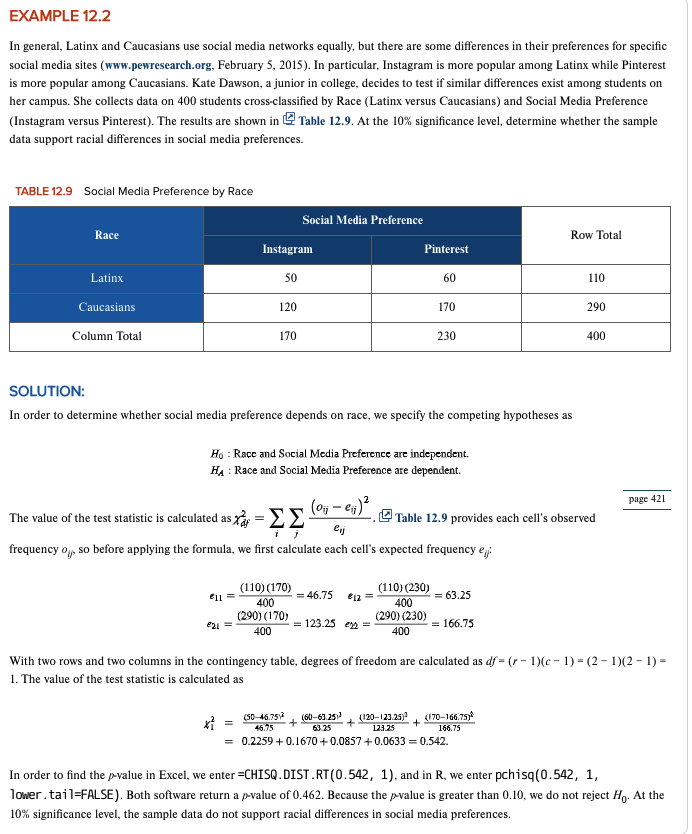ISDS WEEK 16 - CHI-SQUARE TEST FOR INDEPENDENCE
0.0(0)
0.0(0)
Card Sorting
1/12
Earn XP
Description and Tags
Study Analytics
Name | Mastery | Learn | Test | Matching | Spaced |
|---|
No study sessions yet.
13 Terms
1
New cards
What is a chi-square test of a contingency table (test for independence)?
A goodness of fit test analyzing the relationship between 2 categorical variables.

2
New cards
Example of chi-square test of a contingency table

3
New cards
What is a contingency table?
A table that shows the frequencies for 2 categorical variables, x and y, where each cell represents a mutually exclusive combination of the pair of x and y values

4
New cards
What happens when you reject the null hypothesis in a chi-square test?
Rejecting the null hypothesis means the two categorical variables are dependent. If the null hypothesis is not rejected then the two categorical variables are independent

5
New cards
Example of contingency table for two categorical variables
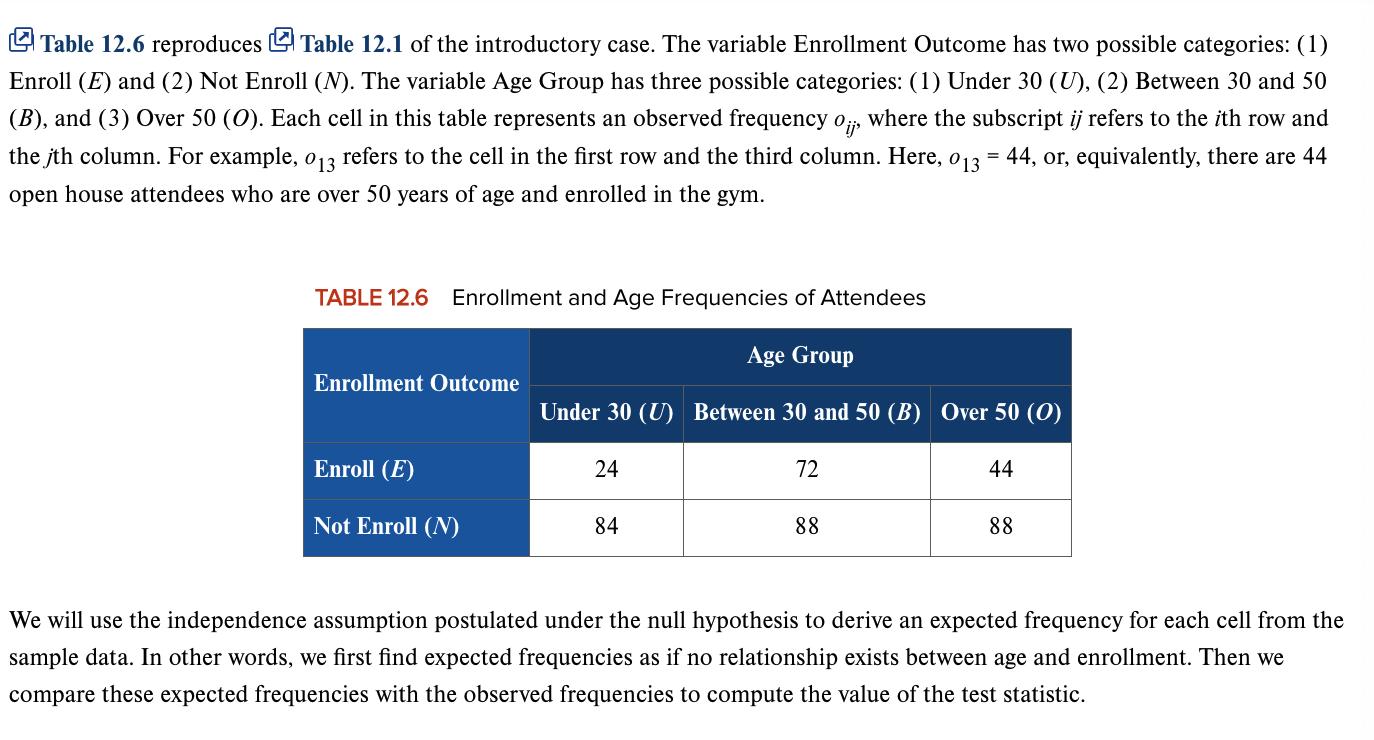
6
New cards
What does the “ij” subscript in an observed frequency refer to?
i = the row
j = the column
j = the column
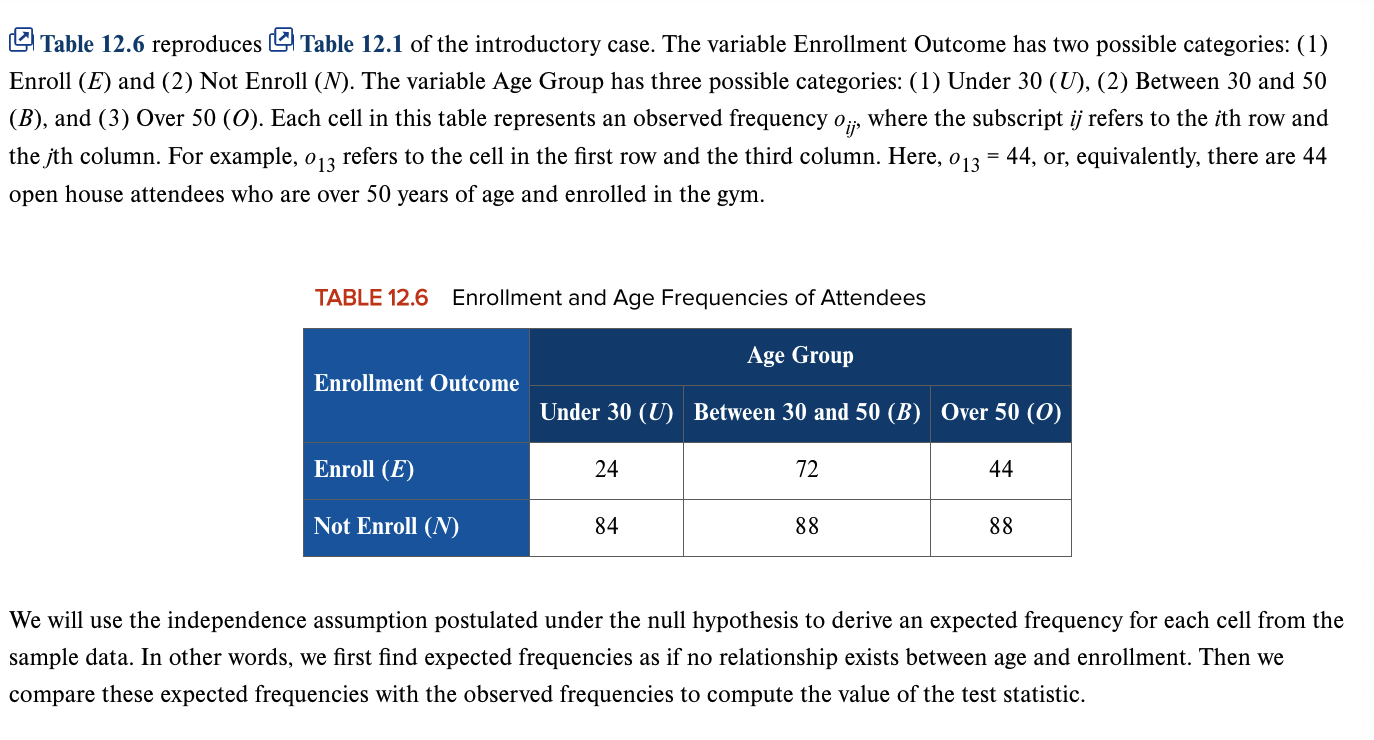
7
New cards
How do you find the row and column total?
Just add across a row or down a column to get the total
\
The totals of each row and column should add up to the sample size
\
The totals of each row and column should add up to the sample size

8
New cards
How do you calculate marginal row and column probabilities?
We can calculate a marginal row/column probability by dividing the row/column sum by the total sample size
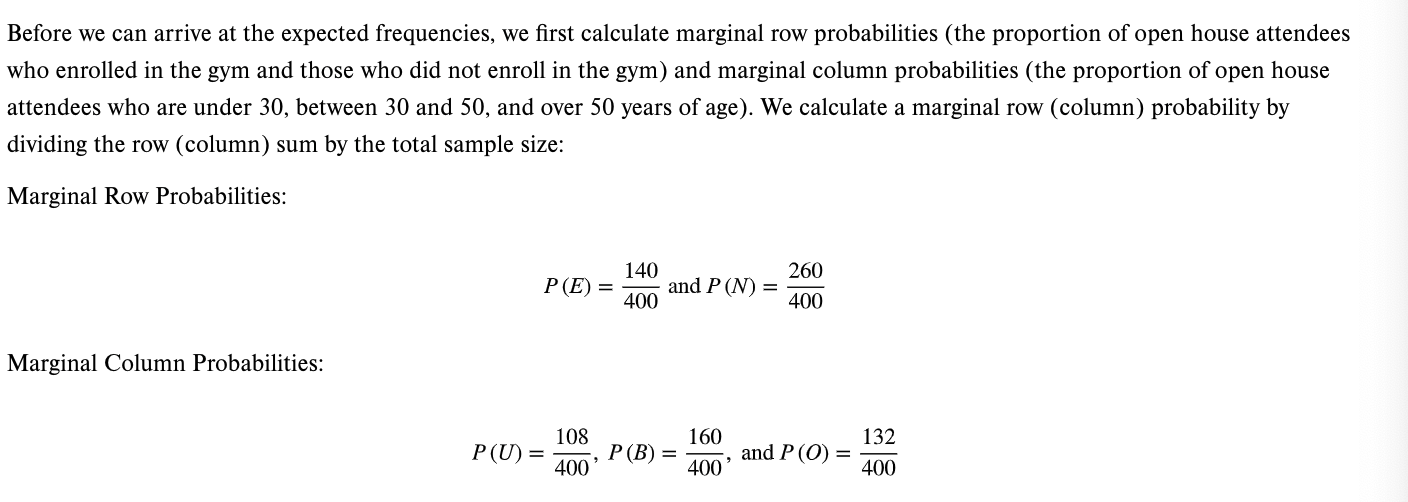
9
New cards
How is the expected frequency for each cell in a contingency table calculated?
(Row i total)(Column j total)/ Sample size

10
New cards
What does the chi-square test statistic X^2df measure?
It measures how much the observed frequencies deviate from the expected frequencies
\
The smallest frequency the test statistic can assume is zero. This occurs when each observed frequency equals its expected frequency. Thus, a test for independence is also implemented as a right-tailed test
\
The smallest frequency the test statistic can assume is zero. This occurs when each observed frequency equals its expected frequency. Thus, a test for independence is also implemented as a right-tailed test
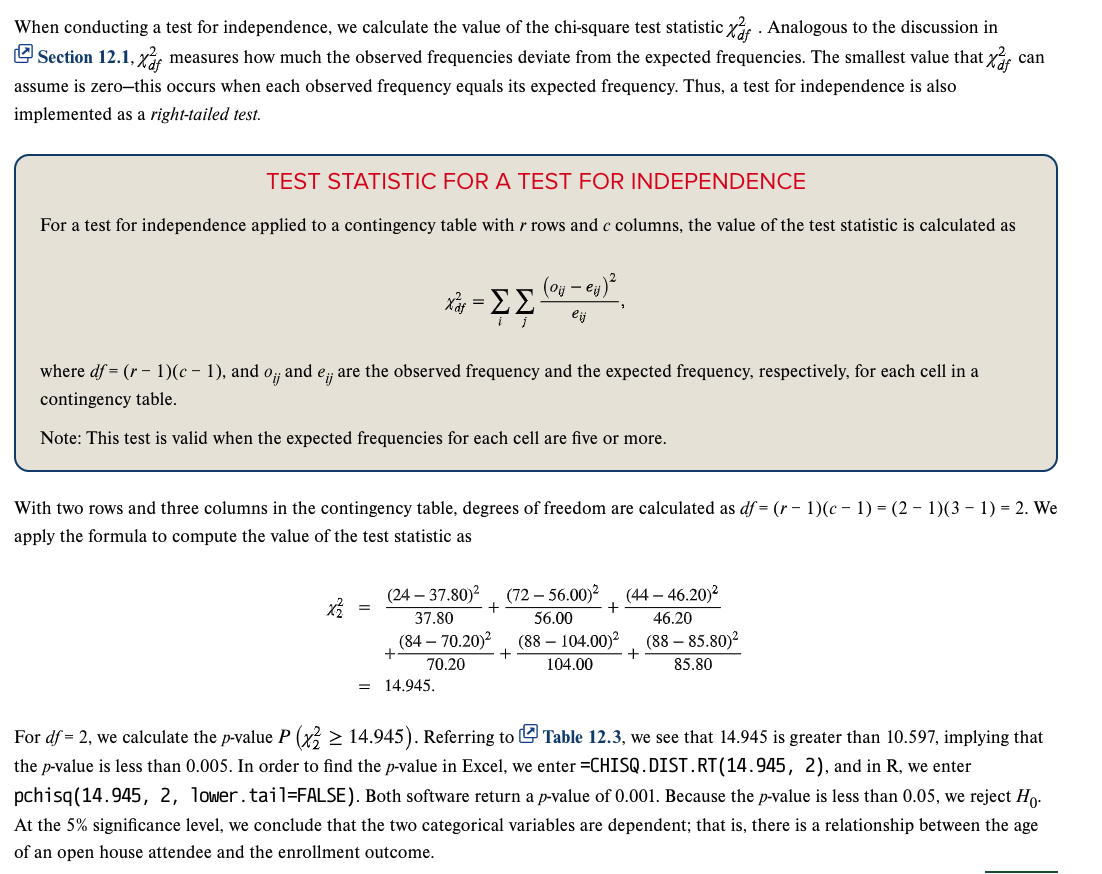
11
New cards
How is the chi-square test statistic X^2df calculated?
df = (r-1)(c-1)
\
oij and eij are the observed (o) and expected frequency (e), respectively, in each cell in a contingency table
\
Test is valid when the expected frequency for each cell are five or more
\
oij and eij are the observed (o) and expected frequency (e), respectively, in each cell in a contingency table
\
Test is valid when the expected frequency for each cell are five or more
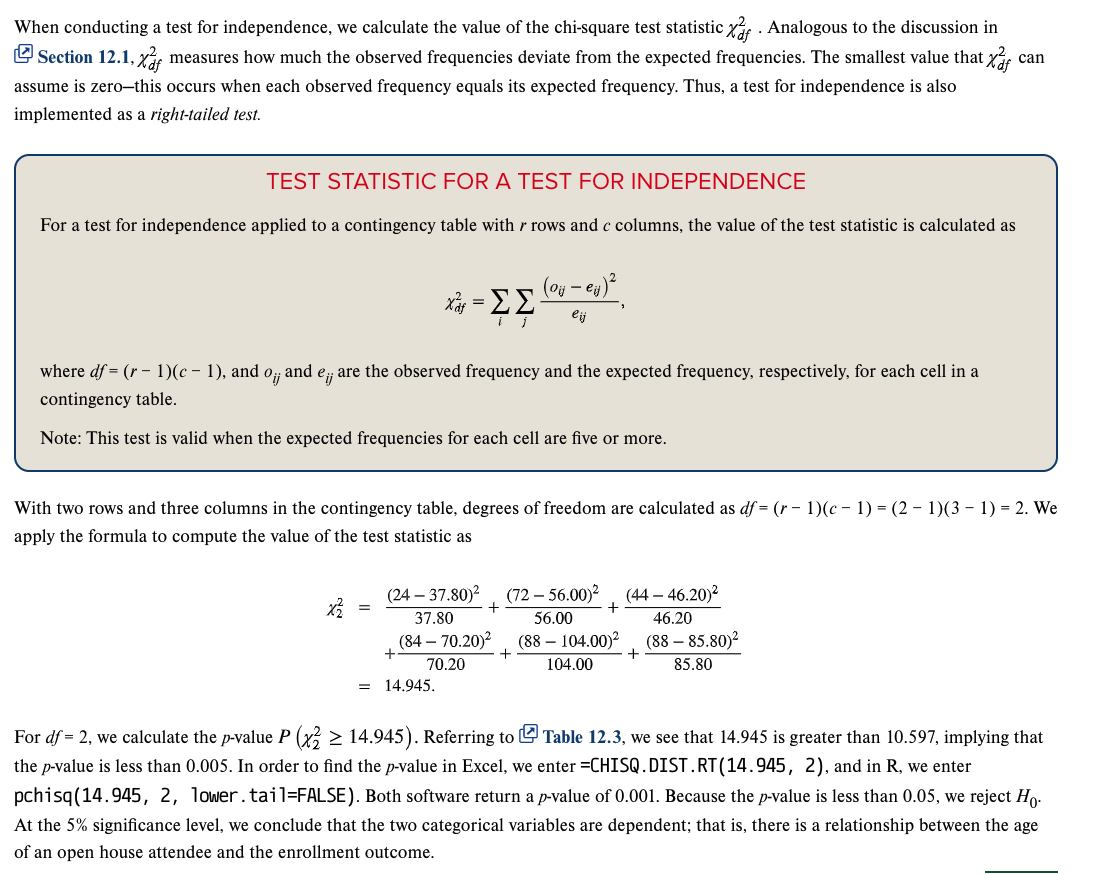
12
New cards
What is the excel function to find the p-value for chi-square test?
CHISQ.DIST.RT (Test statistic, df)
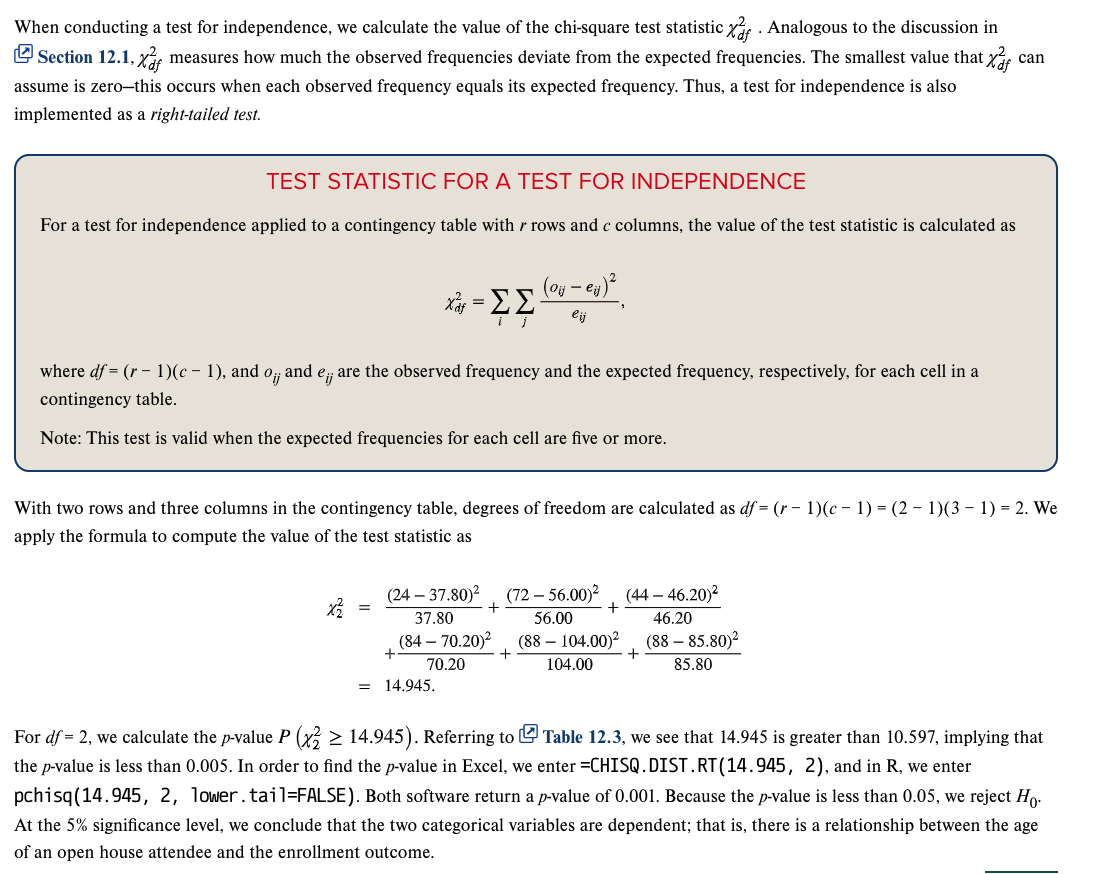
13
New cards
Full example of chi-square test for contingency table
